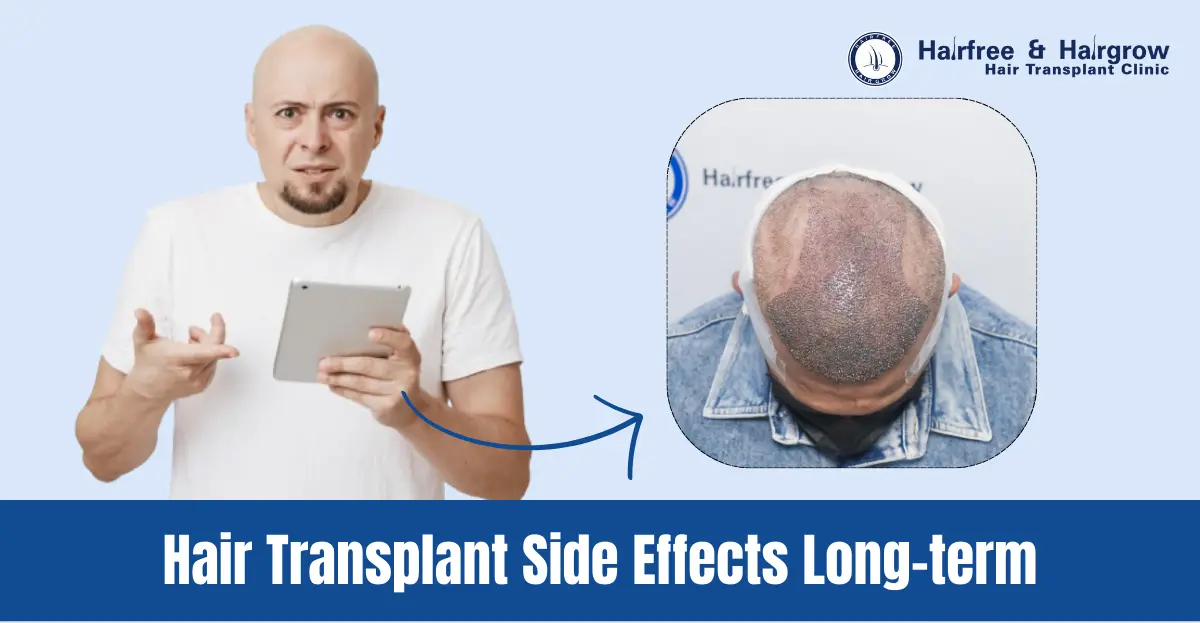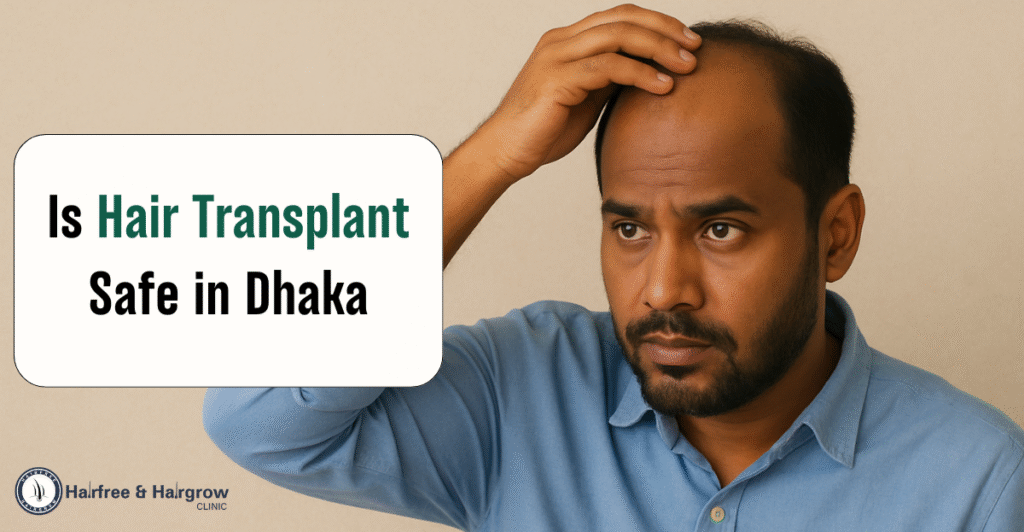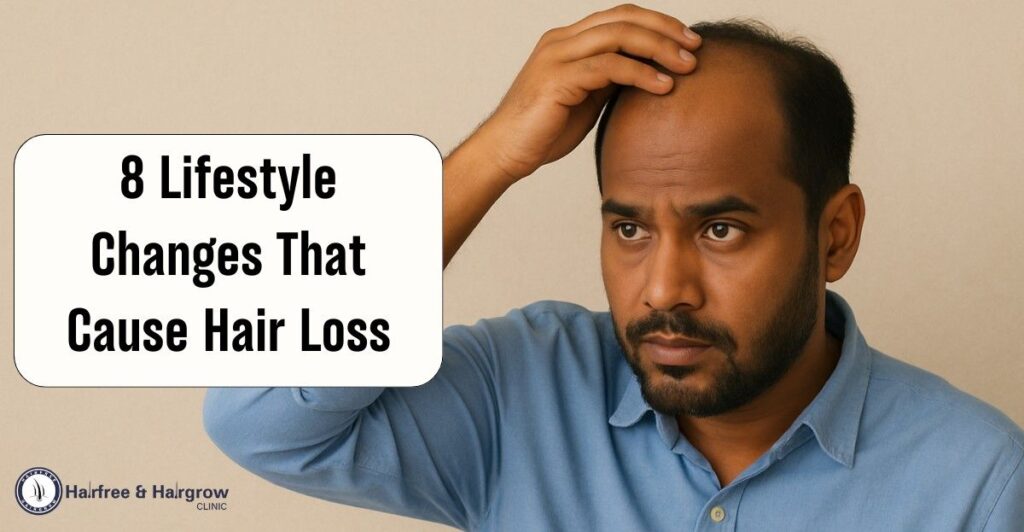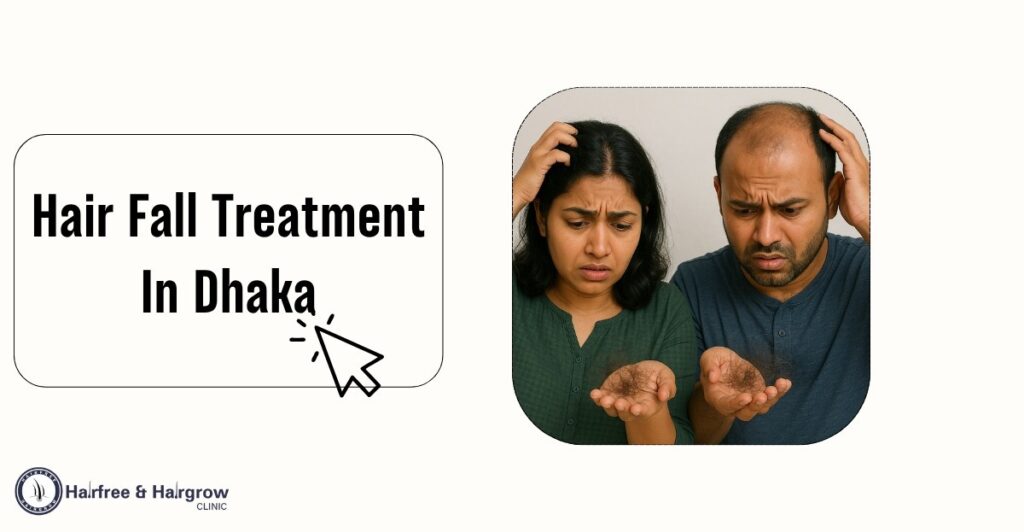When you think of a hair transplant, you likely imagine a permanent fix for hair loss—a one-time solution that restores your confidence. But what’s rarely discussed are the long-term effects that may come with the procedure. While hair transplants are generally safe and effective, they are not without their complexities. Yet, questions about the safety, effectiveness, and long-term impact of these procedures often arise.
Patients frequently ask:
Are there any risks involved in hair transplants?
Can long-term complications occur?
What kind of maintenance is needed after a transplant?
This blog addresses these concerns by examining both immediate and long-term effects, offering guidance to anyone considering this treatment.
Table of Contents
Common Side Effects Immediately After a Hair Transplant
Immediately after a hair transplant, it’s normal to experience some mild side effects as the scalp adjusts to the procedure. These include:
1. Swelling and Redness
The donor and recipient areas may show redness or swelling, which usually subsides within a week. This occurs because the skin undergoes trauma during graft extraction and implantation. Proper post-transplant care, including keeping the scalp clean and following medical advice, can help minimize these effects.
2. Itching and Scabbing
Small scabs may form around the transplanted hair follicles. Itching is also common but should be avoided to prevent disturbing the grafts. A doctor may recommend a medicated shampoo or lotion for relief.
3. Pain and Numbness
Some patients feel mild discomfort or numbness in the treated areas. This is temporary and typically resolves within a few weeks. Painkillers or anti-inflammatory medications prescribed by your doctor can alleviate these symptoms.
4. Shock Loss
Hair shedding, known as shock loss, can occur in the weeks following surgery. While it may seem alarming, it’s a natural process, and regrowth usually begins within three months.

Potential Long-Term Side Effects
For most individuals, there are no significant long-term risks of hair transplants. With advancements like the advanced FUE hair transplant, complications have become rare. However, let’s explore possible long-term effects:
1. Permanent Scarring
Though modern techniques like FUE leave minimal scarring, linear scars may occur in older methods like FUT (Follicular Unit Transplantation). These scars can fade over time but may remain visible if the hair is cut very short.
2. Uneven Hair Growth
Some patients experience uneven hair regrowth due to improper graft placement or differences in hair density. This issue can often be corrected with a follow-up procedure.
3. Infections
While rare, infections may occur if post-surgical care is inadequate. Using prescribed antibiotics and keeping the scalp clean reduces this risk significantly.
4. Overharvesting of Donor Area
Excessive harvesting from the donor area can result in thinning or patchiness. A skilled surgeon minimizes this risk by carefully planning graft extraction.
5. Changes in Scalp Sensation
Numbness or tingling in the donor or recipient area can persist in rare cases. This is generally temporary but may take months to resolve.
6. Graft Failure
While uncommon, not all transplanted hair grafts may survive. Factors like poor blood supply, smoking, or inadequate post-transplant care can affect graft success.
Why Long-term Side Effects Are Rare
The good news is that long-term risks of hair transplants are rare. Most modern clinics use advanced techniques, such as FUE hair transplant, to minimize risks and ensure natural results. Additionally, improvements in surgical tools and methods have made the procedure safer and more effective than ever.
Key reasons why long-term side effects are rare include:
- The minimally invasive nature of FUE and FUT techniques.
- Better understanding of scalp anatomy by trained professionals.
- Comprehensive post-transplant care guidelines provided by clinics.
When performed by a skilled surgeon, a hair transplant has a high success rate, and patients typically enjoy long-lasting results.
How to Avoid Long-term Side Effects
To reduce the risk of complications and ensure a smooth recovery, consider the following tips:
1. Choose a Qualified Clinic Like Hairfree & Hairgrow
The expertise of your surgeon plays a significant role in minimizing side effects. A reputable clinic like Hairfree & Hairgrow uses advanced techniques, skilled surgeons, and a patient-first approach to deliver excellent results.
2. Follow Post-Transplant Care Instructions
Proper aftercare is crucial for a successful recovery. Follow these steps:
- Keep the scalp clean to prevent infections.
- Avoid scratching or picking at the transplanted area.
- Protect your scalp from direct sunlight.
- Avoid intense physical activities during the initial recovery phase.
3. Attend Regular Follow-ups
Regular check-ups with your surgeon allow them to monitor your progress and address any concerns early. This ensures that the transplanted hair grows well and the donor area heals properly.
Conclusion
While a hair transplant is generally safe, it’s important to understand the potential side effects of hair restoration, particularly when considering the hair transplant side effects long-term. With proper planning, an experienced surgeon, and good aftercare, you can minimize risks and enjoy natural, long-lasting results.
If you’re considering a hair transplant, choose a clinic with proven expertise, such as Hairfree & Hairgrow Clinic, where your hair restoration journey will be in trusted hands.
FAQ
No, long-term side effects are rare, especially when the procedure is done by an experienced surgeon using advanced techniques.
In rare cases, patients may experience prolonged numbness or tingling. However, this is usually temporary and subsides over time.
Choose a qualified clinic, follow post-transplant care instructions, and attend regular follow-ups with your surgeon to ensure proper healing and growth.

Written By
Medical Officer & Hair Transplant Surgeon
Dr. Nazmin Sultana Nipa is a distinguished hair transplant doctor in Bangladesh, known for her advanced skills in hair restoration. As a Medical Officer and Hair Transplant Surgeon, Dr. Nipa combines her extensive experience in the field with a focus on transparency and patient-centered care.
Disclaimer
We’ve made all possible efforts to ensure that the information provided here is accurate, up-to-date and complete, however, it should not be treated as a substitute for professional medical advice, diagnosis or treatment. See Detailed Disclaimers Here.




